Conventional roses are recommended for a limited range of USDA plant hardiness zones. The standard zones for roses are Zones 5-8, as reflected in the table below. That may work well in some parts of the United States, but what about growing roses in Florida?
If we abide by the conventional zones for rose growing, gardeners in parts of the Florida Panhandle and some pockets in the extreme northern part of the state could potentially grow roses. Most Florida growers would be left out in the cold, though. Or, more accurately, they would be left out in the heat.
Traditional rose plants are simply unable to withstand the hot conditions found in much of Florida. So does this mean that Floridian gardeners have to pass up one of the most classic and beloved flowers the world has ever known? Not at all! Thanks to the work of some expert rosarians, hybrid roses have been developed that can grow well below and far above the hardiness zones of conventional roses.
One rose expert in particular, David Austin, threw the doors wide open to rose growers in both cold and hot climates. Florida rose lovers owe him a debt of gratitude. Thanks to his work in hybridization, roses can now grow in places that would have been thought impossible just a few years ago. All of the flowers discussed in this article are David Austin roses, and they were all created to thrive in the hot conditions experienced by Florida flower beds and gardens.
Let’s talk about six roses that every gardener in the Sunshine State needs to know!

With the hybrids that are now available, roses can flourish in the Sunshine State!
©iStock.com/Дмитрий Ларичев
Types
| Rose Facts | |
|---|---|
| Botanical Name | Rosa spp. |
| Common Name | Rose |
| Plant Type | Perennial |
| Hardiness Zones | Zones 5-8 |
| Sunlight | Full |
| Bloom Seasons | Spring, Summer, Fall |
| Toxicity | Non-Toxic |
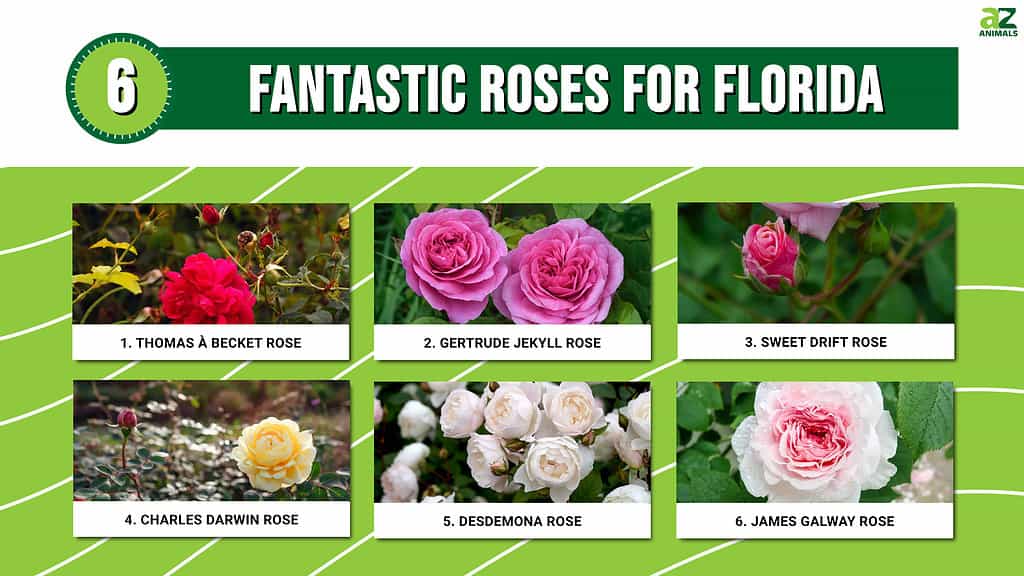
The Desdemona rose and James Galway rose are two types of roses that can withstand the Florida heat.
©
1. Thomas à Becket Rose (Rosa ‘Thomas à Becket’)
Florida gardeners who want a classic red rose, look no further! The Thomas à Becket rose features medium flowers with deep crimson petals that take on an informal rosette pattern. The flowers boast a lemon-like solid fragrance. Pollinators such as bees and butterflies will love these blooms as much as you do.
This English shrub rose grows in a traditional vase shape and reaches about five feet high with a four-foot spread at maturity. It is heat tolerant up to Zone 11, meaning every Florida rose grower can feature this plant in their garden.
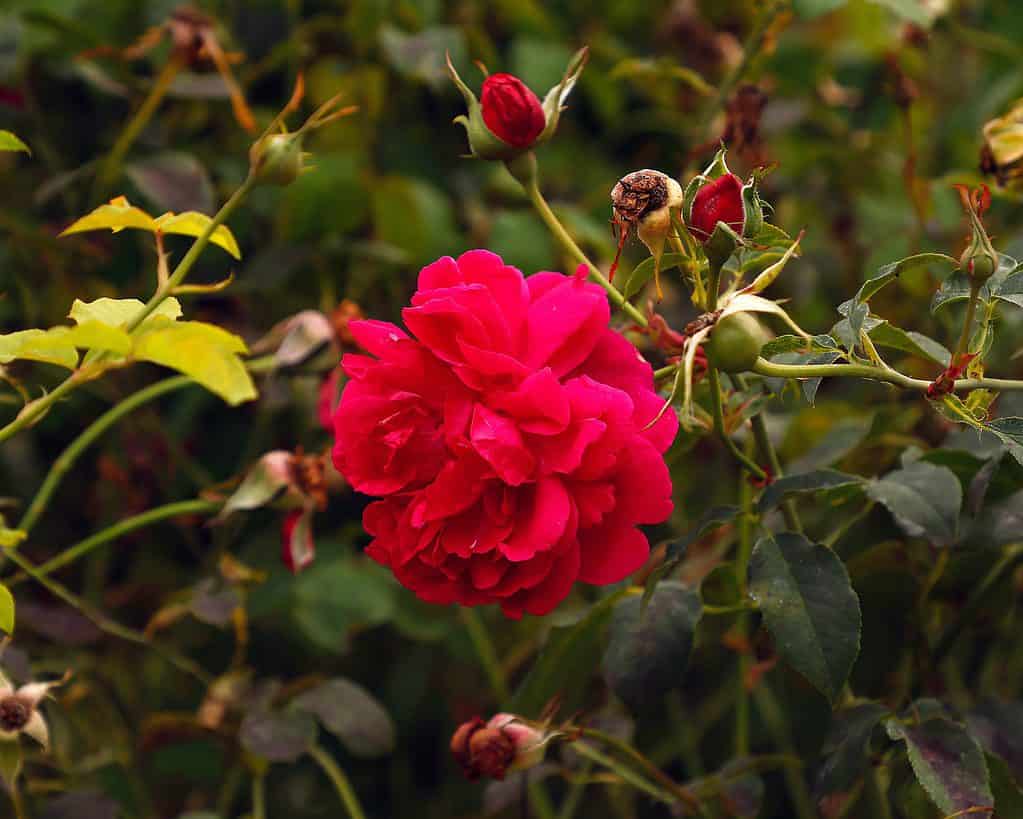
The Thomas à Becket rose boasts a large crimson-red shallow-cupped flower.
©Joe Kuis/Shutterstock.com
2. Gertrude Jekyll Rose (Rosa ‘Gertrude Jekyll’)
Introduced in 1986, the Gertrude Jekyll Rose is named after the influential 20th-century gardener. This rose is one of the first English Roses to bloom each season. The plant produces clusters of large, fully double flowers that bloom in a rosette pattern. The showy blooms feature a gorgeous rich pink hue.
The flowers boast a fragrance that is just as lovely as their appearance. It is a quintessential Old Rose scent that invites you to actually “stop and smell the roses!”
The plant forms a medium upright shrub that reaches five feet high with a 3-4 foot spread at maturity. It can also be grown as a small climber.
The Gertrude Jekyll rose is recommended for Zones 4-11, so it’s another rose that can be prominently displayed in any Florida garden.
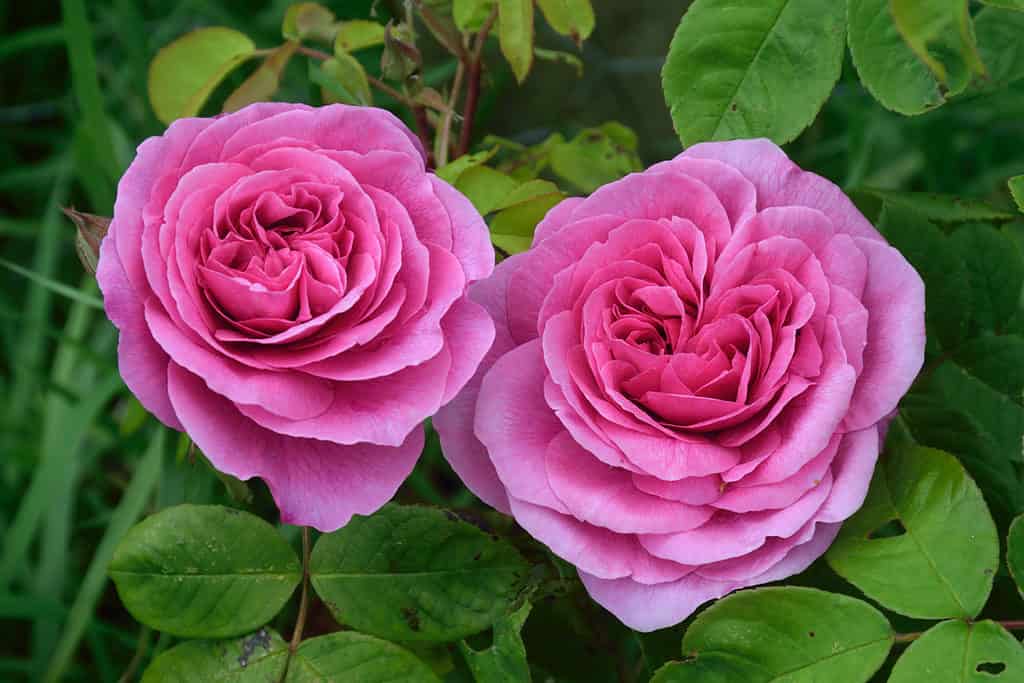
The rich pink blooms of the Gertrude Jekyll rose smell as sweet as they look!
©iStock.com/STEVENSON21
3. Sweet Drift Rose (Rosa ‘Sweet Drift’)
The Sweet Drift Rose is another pink rose, but this one will be especially appreciated by gardeners who don’t have a lot of space to work with. The plant grows to a height of only two feet with a spread of three feet. This may be the perfect rose for your limited space if you live in a populated or congested area in Florida.
The plant blooms in clusters of fluffy flowers. The lovely pastel-pink blooms are packed with 35 petals, and the glossy green foliage is strongly resistant to powdery mildew, black spot disease, and other common rose problems.
This delicate-looking rose is much tougher than it may appear. However, it is heat tolerant to Zone 11, so every rose grower from Pensacola to Miami can enjoy this plant in their gardens and flower beds, even if they don’t have a lot of gardening space.
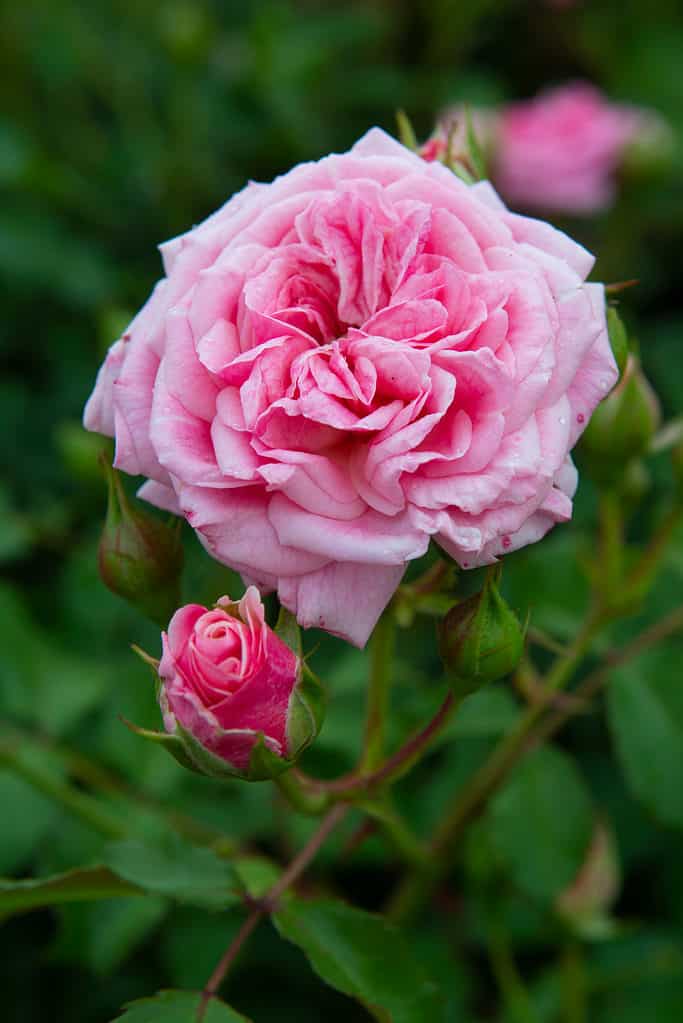
The Sweet Drift rose is a lovely flower for gardens without a lot of space.
©InfoFlowersPlants/Shutterstock.com
4. Charles Darwin Rose (Rosa’ Charles Darwin’)
The blooms of this rose are as sunny as the Sunshine State itself, featuring a deep yellow, almost gold, color. The large flowers begin full and rounded and then open later to shallow cups. The fragrance of the flowers is quite strong and, depending on the weather conditions, can vary from a floral tea to an almost pure lemon fragrance.
Named after the famed naturalist, this plant features matte green leaves and blooms packed with 140 petals. The bushy shrub rose grows around four feet high with a similar spread and is heat tolerant to Zone 11.
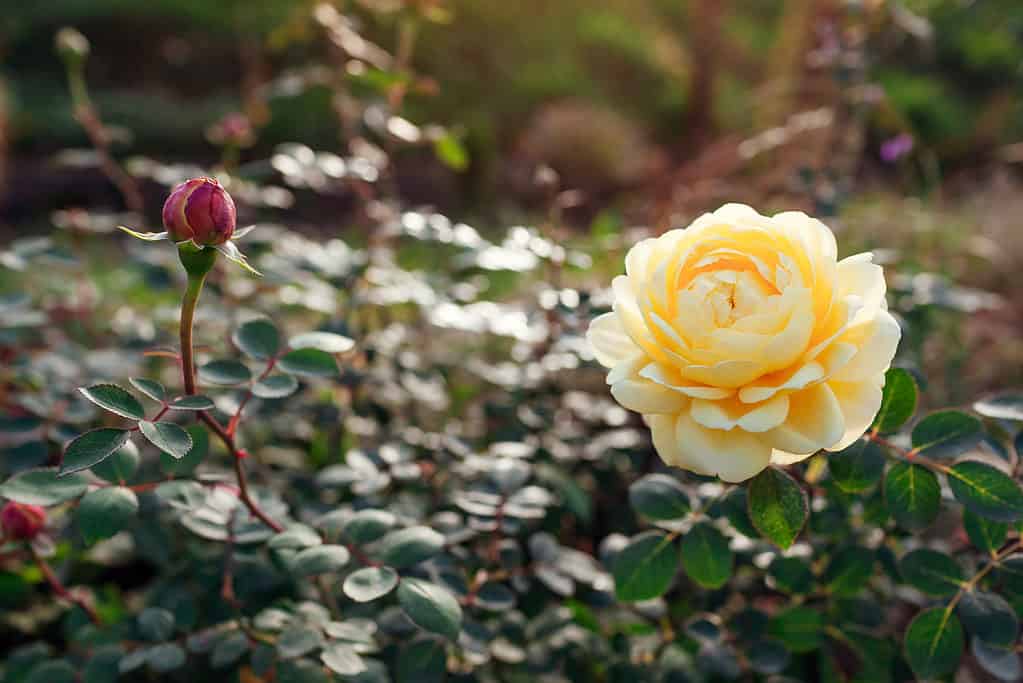
The Charles Darwin rose features sunny yellow blooms that fit perfectly in a Sunshine State flower bed.
©iStock.com/Maryviolet
5. Desdemona Rose (Rosa ‘Desdemona’)
This David Austin stunner features chalice-shaped blooms that are a gorgeous white with just the slightest hint of pale pink. The flowers are aromatic, with a strong scent of cucumber, lemon zest, and almond.
Unlike the tragic Shakespearean character that is the flower’s namesake, this rose can live on and on in any part of Florida. It is also recommended up to Zone 11.
The shrub rose will grow four feet high and three feet wide at maturity. Remove spent blooms to promote new bloom production. This is known as deadheading.

Desdemona roses are a soft white with just a touch of pale pink.
©Gary Matuschka/Shutterstock.com
6. James Galway Rose (Rosa’ James Galway’)
If you would like to feature a climbing rose in your Florida garden, the James Galway rose is for you! Named after the Irish flutist, you can almost hear the lilting notes of the flute as you watch this lovely rose climb to impressive heights in a rather short time.
When grown as a climbing rose, this plant can reach heights of 10-12 feet with a 4-5 foot spread. With pruning, it can also be grown as a shrub rose with a height closer to 5-6 feet.
The flowers measure four inches across at their peak bloom and are packed with over 100 petals. The petals are a darker pink at the center and then become lighter as they grow outward. The outermost petals are such a pale pink that they are nearly white. The flowers emit a medium Old Rose fragrance.
This low-maintenance plant is nearly thornless and features superb disease resistance. It is recommended for gardens up to Zone 11.
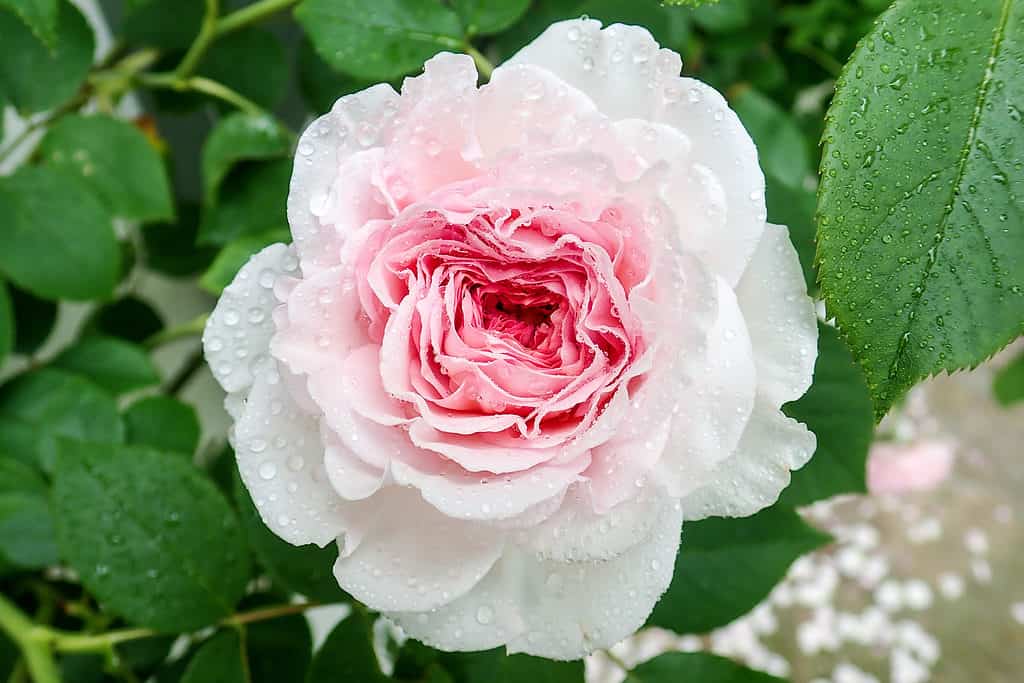
The James Galway rose boasts delightful shades of pink.
©iStock.com/Peter Fleming
Planting Tips
Thanks to experts like David Austin, every Florida garden can be a rose garden! Now that you have a few roses in mind for your landscape, here are some best practices that you can implement to help your roses bloom strong and long each year.
When to Plant
The best planting time for Florida roses is November-January. If you miss this window, though, you can still plant your roses. Florida has a 12-month gardening season, after all. But if it’s possible, late fall and early winter is prime rose-planting time for Florida gardens.
Where to Plant
Roses need a lot of sunlight to thrive. Select a planting site that receives six hours of sun per day. The location must also drain well. Roses need consistent moisture, but standing water can lead to disease and root rot.
For optimum results, prepare the site at least a month before planting. Break up the soil and work in a generous amount of organic matter such as compost, dehydrated manure, peat moss, or leaf mold.
When you are ready to plant, prepare an area about two feet in diameter and work additional organic matter into the soil. Dig a hole large enough to fit the root ball and add some bone meal to give your plant a slow release of nutrients as it grows. Cover the root ball, tamp down the soil, and then water the site well.
If the planting site has sandy soil, add a soil mixture that is created for roses. Sandy soil will allow water to escape too quickly, and the plant will not receive enough moisture.

Mix organic matter into the soil at planting to provide your roses with needed nutrients.
©Singkham/Shutterstock.com
Growing Season
The growing season is 24/7/365 in Florida, which means year-round care will be necessary for your roses.
Roses need a lot of water to thrive (but not standing water, as noted earlier). Unfortunately, Florida is the fifth rainiest state in the U.S., so gardeners will need to adjust based on the season and local conditions. Generally speaking, though, plan to water your roses once or twice a week.
When watering your roses, water them deeply. The water needs to reach 16 inches down into the soil. If adequate water is not provided, it will only penetrate the top few inches of the ground. In addition, the plant’s roots will follow the water, so shallow water will lead to shallow roots. This will almost certainly have a deleterious effect on the plant and likely means its life will be cut short.
Along with regular watering, feeding your roses once a month is important. Even though the rose hybrids we explored are designed for the heat, Florida still features rather harsh conditions for rose growing. Providing extra nutrients will help your plants thrive in this tough environment. An organic fertilizer that is specific to roses is your best bet. It will have the right mix of nitrogen, potassium, and phosphorus to keep your roses at their peak health.

Florida gardeners should deeply water their roses 1-2 times per week, adjusting to current weather conditions.
©photoPOU/Shutterstock.com
Toxicity
All roses are non-toxic for people and pets. Actually, all roses are edible and are used in many food and drink recipes.
If you plan to grow roses for culinary purposes, make sure that no chemicals have been used on the plants. Synthetic pesticides and fertilizers will toxify the plants and render them inedible and dangerous.
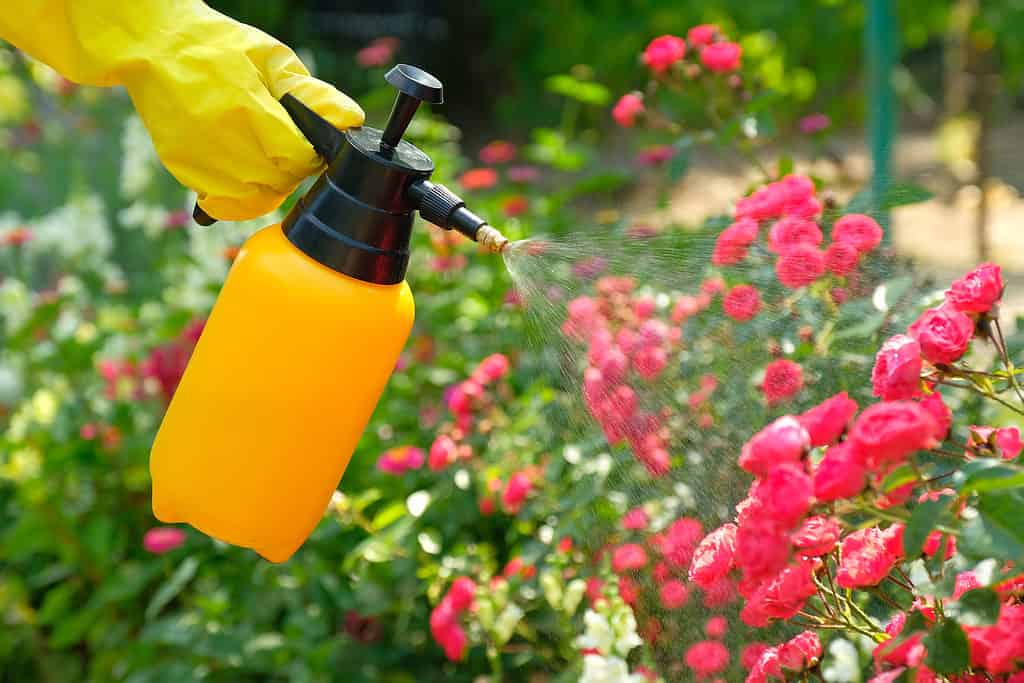
If chemical fertilizers or pesticides have been used, the roses can no longer be considered non-toxic.
©Savanevich Viktar/Shutterstock.com
Summary of 6 Fantastic Roses for Florida
Here’s a recap of the six sensational roses we took at look at that are suitable for Florida gardens.
| Number | Common Name | Botanical Name | Mature Height | Hardiness Zones |
|---|---|---|---|---|
| 1 | Thomas à Becket Rose | Rosa ‘Thomas à Becket’ | About 5 ft high with a 4-ft spread | Up to Zone 11 |
| 2 | Gertrude Jekyll Rose | Rosa ‘Gertrude Jekyll’ | 5 ft high with a 3-4 ft spread | Zones 4-11 |
| 3 | Sweet Drift Rose | Rosa ‘Sweet Drift’ | 2 ft with a spread of 3 ft | Up to Zone 11 |
| 4 | Charles Darwin Rose | Rosa ‘Charles Darwin’ | 4 ft high with a similar spread | Up to Zone 11 |
| 5 | Desdemona Rose | Rosa ‘Desdemona’ | 4 ft high and 3 ft wide | Up to Zone 11 |
| 6 | James Galway Rose | Rosa ‘James Galway’ | 10-12 ft with a 4-5 ft spread | Up to Zone 11 |
The photo featured at the top of this post is © iStock.com/HedgerowRose
Thank you for reading! Have some feedback for us? Contact the AZ Animals editorial team.






